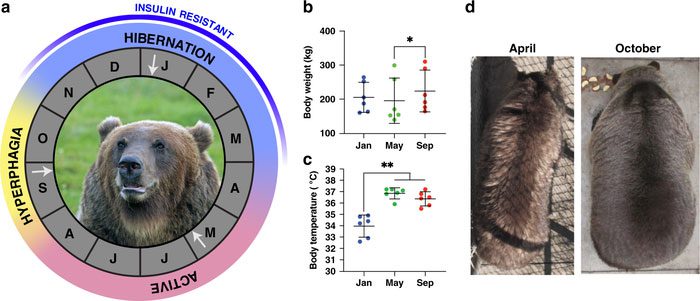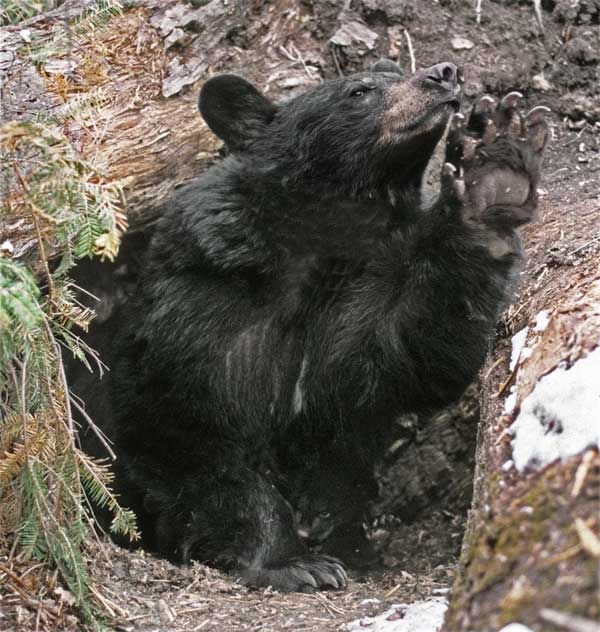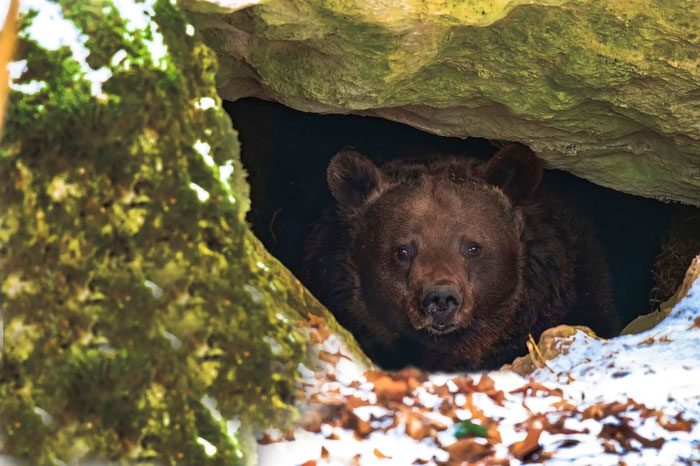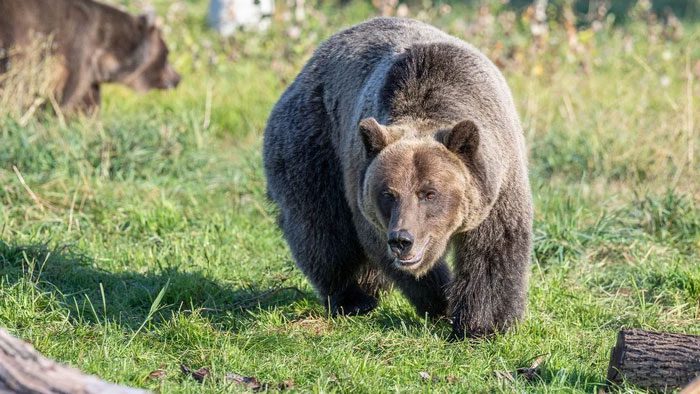Hibernation is a fascinating natural phenomenon observed in several animal species, including bears. During the winter months, bears enter a deep sleep known as hibernation to conserve energy and survive in harsh conditions.
Physiology of Bear Hibernation
Before delving into the consequences of awakening a hibernating bear, it is essential to understand the physiological changes that occur during this hibernation state.
During hibernation, their metabolic rate significantly decreases, dropping to nearly 25% of its normal rate. This reduced metabolic activity allows bears to conserve energy and rely on stored fat to sustain themselves.

Bear hibernation can last up to nearly 6 months, during which some species, such as the American Black Bear (scientific name: Ursus americanus), can reduce its heart rate from 55 beats per minute down to just 9 beats per minute, decreasing its overall metabolic rate by 53%.
Another important adaptation that bears exhibit during hibernation is a reduction in body temperature. While their internal body temperature remains relatively stable, bears can significantly lower the temperature of their limbs. This adaptation helps reduce heat loss and prevents unnecessary energy expenditure. Additionally, bears also slow their heart rate and breathing, contributing to their overall reduced metabolic rate.
In this diminished physiological state, bears do not eat, drink, urinate, or defecate. Instead, they rely on stored fat accumulated during the summer and fall to provide essential nutrients for survival. Notably, the entire hibernation period can last several months, depending on the species and local environmental conditions.

Essentially, hibernation is when an animal enters a completely inactive state, with blood flow and metabolic rates reduced to levels that would be nearly intolerable for non-hibernating species, such as humans.
Waking a Hibernating Bear
Waking a hibernating bear is a risky endeavor fraught with dangers. Hibernating bears are often in a vulnerable state, and disturbing them can lead to serious consequences. While witnessing a bear waking up might be exciting, it is vital to prioritize the health and safety of both humans and the bear itself.
Awakening a bear too early disrupts its natural hibernation cycle, which can have negative consequences on the bear’s health and survival. A sudden increase in metabolic rate, heart rate, and body temperature can be a shock to their system, leading to stress, exhaustion, and even death. Disturbing a hibernating bear also means depleting its crucial energy reserves, which are essential for its survival during the winter months.
Moreover, waking a bear can provoke aggressive reactions. Bears have a natural instinct to protect their personal space, especially when they feel threatened or startled.
A bear that is awakened may perceive the disturbance as an intrusion, leading to defensive behaviors such as growling, charging, and attacking; in the worst-case scenario, the bear could fatally harm the person disturbing it. This reaction is a natural instinct, and the consequences can be severe, endangering both human and bear.

You could be attacked by a bear if you accidentally wake them while they are hibernating.
Human-Bear Encounters
Encounters between humans and bears, especially in the context of awakening a hibernating bear, pose significant risks. It is important to remember that bears are wild animals. Encountering a hibernating bear without the proper knowledge and experience can lead to unpredictable consequences.
In areas where bears hibernate, it is crucial to follow guidelines and regulations set by local wildlife management authorities. Educating the public about bear behavior and the risks associated with disturbing hibernating bears can help prevent potential dangerous situations. This knowledge empowers individuals to make informed decisions and maintain a safe distance from bears during their hibernation.
In the event of accidentally disturbing a hibernating bear, it is important to slowly and quietly retreat without further agitating the bear. Creating distance between yourself and the bear reduces the likelihood of conflict. If a human-bear encounter escalates, you should slowly back away, avoiding direct eye contact. Carrying bear spray or other deterrents can also be useful in such situations.

Bears have a natural instinct to protect their personal space, especially when they feel threatened or startled.
Conservation and Coexistence
Understanding the importance of hibernation for bears is crucial for their conservation and our ability to coexist peacefully with these magnificent creatures. Protecting the habitats where bears hibernate, ensuring ample food resources, and minimizing disturbances in these areas are essential steps to ensure their survival.
Conservation efforts aimed at preserving bear populations involve community education, habitat restoration, and enforcing regulations to protect bears during their hibernation period. By raising awareness about the significance of hibernation and the risks associated with disturbing bears, we can foster a greater appreciation for these remarkable animals and encourage responsible interactions.

If you accidentally disturb a hibernating bear, it is important to retreat slowly and quietly without further agitating the bear.
Ultimately, waking a hibernating bear is an act that should be avoided at all costs. Awakening a hibernating bear has serious consequences for both humans and bears. The physiological disruption and potential aggressive reactions can lead to stress, exhaustion, injury, or even death.
Understanding the significance of hibernation, respecting bears as wildlife, and promoting coexistence are vital steps in protecting these amazing creatures and maintaining a safe environment for everyone. By prioritizing educational and conservation efforts, we can ensure harmony between humans and hibernating bears while preserving the wonders of the natural world.


















































